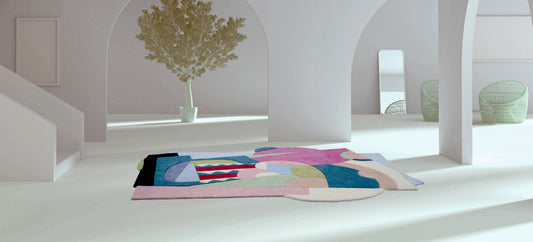
Georges Valmier’s multidisciplinary approach towards art really set him apart from his contemporaries as an artist. With a passion for the arts that was encouraged from a very young age it is no surprise that Valmier’s contributions range from art to music and even includes theatre. Valmier’s artistic style transitioned multiple times, first beginning with Impressionism, then shifted to Cubism and finally culminating in Abstractionism; he made significant contributions in each stage earning him the title of a prolific artist in the history of modern painting.
Stage one: Impressionism
The Impressionist movement finds its origins in Paris in the 1860s. Academic paintings of the time followed the standard practices of the past, but the Impressionists, not unlike the Realists before them, chose to defy the official art and practices of the Academy. Calling themselves the painters of urban modern life, the Impressionists adopted a more loose “sketchy” style that was in contrast to public preferences.
Valmier was enrolled at the École des Beaux-Arts and one of his instructors was Luc-Olivier Merson. However he remained unsatisfied with the program, which was too classical and stringent. His departure from the academy after two years can be linked to the works of Paul Cézanne which inspired him to defy convention and seek out his own ties with art. Thus his initial works have a strong influence of Impressionism. However, it was gradually dismissed for a newer style of Cubism that Valmier discovered when he was around 25 years of age.
Stage Two: Cubism
Cubism is an early-20th-century avant-garde art movement that effectively revolutionised European art, especially painting. The traditional technique of perspective as a single viewpoint was discarded in favour of geometric shapes, overlapping planes, and most importantly, collage. This influential art style was founded by Pablo Picasso (Spanish) and Georges Braque (French) between 1907 and 1914. Valmier was an early practitioner of this style as well; he also used geometric shapes typical for Cubism, but he ironically did so without knowledge of the Cubist movement. His works also differed to a considerable degree from those of Picasso and Braque, especially in the ways in which he manipulated the use of colour.

This artwork titled The Piano [1920] is an epitome of Valmier’s inerpretation of art and the Cubist Movement as a whole. Characterised by the use of overlapping patterns and varying textures, along with stippling that is borrowed from the Neo-Impressionists, this painting showcases marvellous synthesis and the artist's broadened knowledge of colours and inventive shapes.
A critic had this to say regarding Valmier's unique approach towards Cubism:
"Valmier perceives Cubism as the foundation of a new art, refined and stripped of the anecdote that the subject constitutes, and which, by its abstraction, becomes universal language."
Stage Three: Abstractionism
Abstract art involves the creation of a visual language that exists in independence from worldly visual references. Its chaotic appearance is supported by a structure of six key elements: colour, shape, form, texture, line, and value. As an art form, it became fully fledged by the 20th century.
Georges Valmier was among the painters to adopt a looser Abstractionism style; this was the final stage of his journey as an artist. Accompanied by his acquaintance Albert Gleizes, Valmier began to incorporate religion and metaphysics into his artworks.
Along with other notable artists like Jean Arp, Doesburg, Hélion, Herbin, Frantisek Kupka and Vantongerloo, Valmier laid the foundations of the Abstraction-Création group. It was formed in 1931 as a response to the influence of Surrealists such as André Breton. They aimed to promote Abstractionism as an art form by organising group exhibitions.

Today, Valmier’s works can be found at the Solomon R. Guggenheim Museum in New York, the Kröller-Müller Museum in Otterlo, Netherlands, and the Columbus Museum of Art. Thus Georges Valmier made significant contributions as a painter across major art movements. He also made his name as a set designer and a musician. His journey as an artist is a beacon of inspiration to many, even us at Ruggism. Our Valmier collection boasts of designs inspired by the works of this eminent artist, adopting his use of inventive shapes and potent colours.
Explore our Valmier Collection here.







